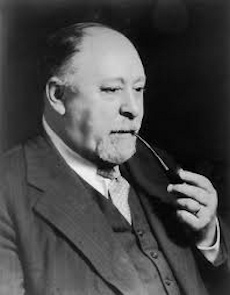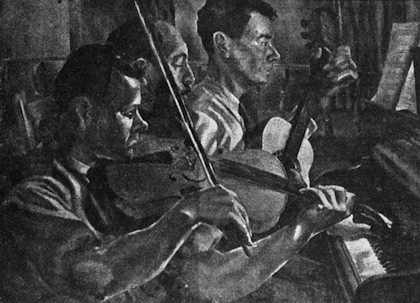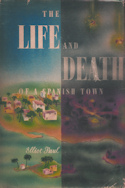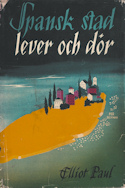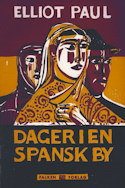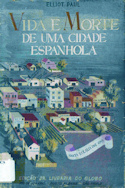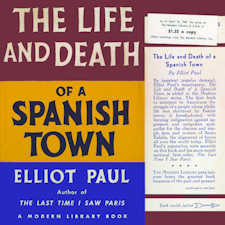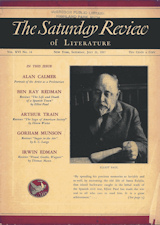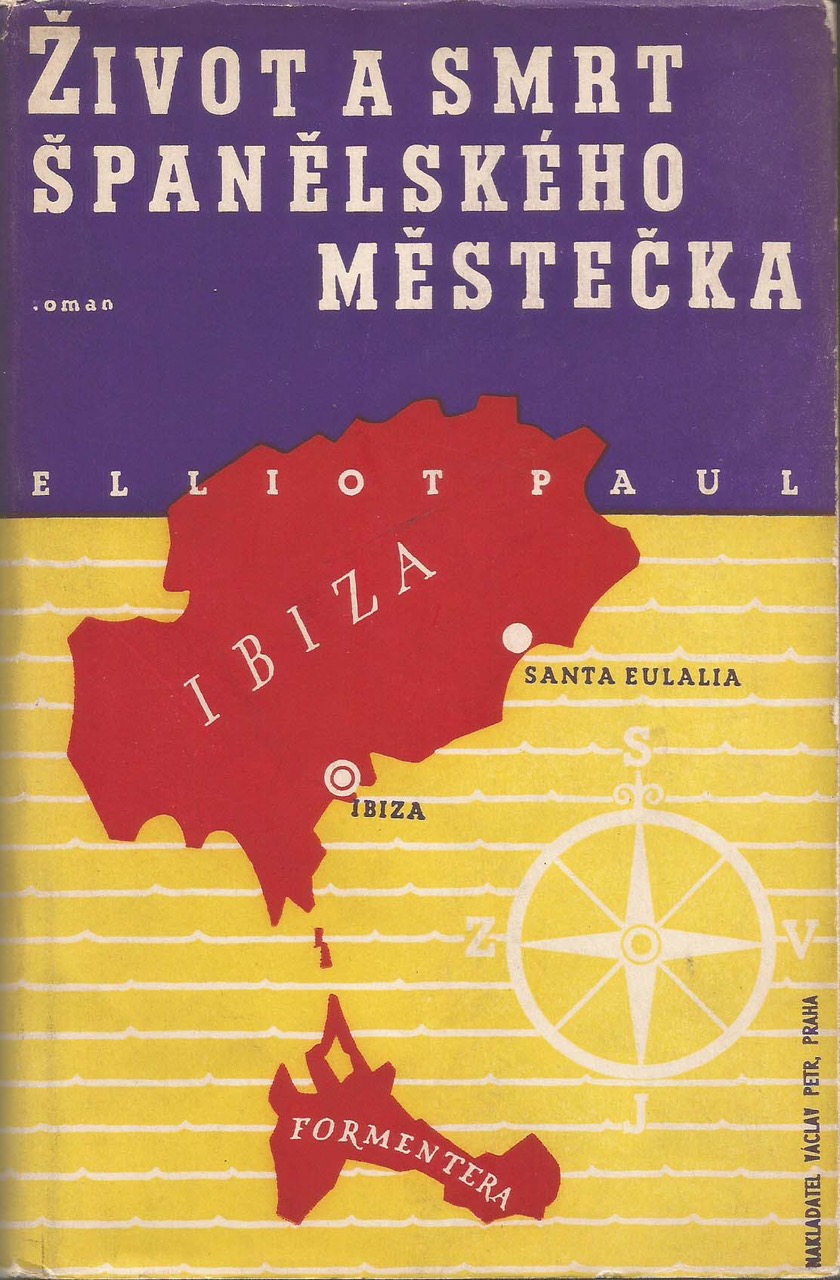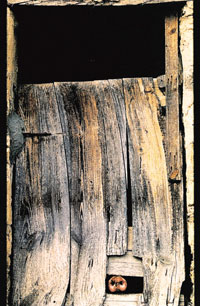| |||||||||||||||||||||||||||||||||||||||||||||||||||||||||||||||||||||||||||||||||||||
| | |||||||||||||||||||||||||||||||||||||||||||||||||||||||||||||||||||||||||||||||||||||
After losing his father at the age of four, Paul was brought up by his mother in a small town outside Boston. Unable to afford college fees, he followed his elder brother at sixteen to Montana, where he worked on a variety of jobs. After studying engineering for a year at the University of Maine (1908-09), he moved west once again, initially for a desk job on the sewer commission in Louisville, Kentucky, where he also developed his lifelong passion for jazz. There followed two dam-reclamation projects in Wyoming and Idaho (1910-14), interspersed with periods as a bar-room pianist - a talent which was to serve him well in Ibiza during hard times later on. Paul’s writing career began in 1914 with three years as a political reporter at the State House of Massachusetts in Boston, a job to which he returned for seven more years after serving with the American army in France. His first three novels, Indelible (1922) Impromptu (1923) and Imperturbe (1924) are semi-autobiographical accounts of his life up to the 1920s, incorporating his Massachusetts upbringing, war experience and 1919 marriage. His lighter parodies of detective fiction are foreshadowed by an unpublished take-off of T. S. Eliot’s The Waste Land (1922), written shortly after the experimental poem first appeared. In 1925 Paul decided to move to Paris, the European capital of avant-garde art and literature, leaving behind his first wife, Rosa Gertrude Brown. As with many American writers of the period, Paul’s years in the French capital were of vital significance for his subsequent career. The first two were spent working for the European edition of the Chicago Tribune, but in the spring of 1927 he joined poet Eugene Jolas at transition, bringing together Gertrude Stein and James Joyce, as well as key Lost Generation figures like Hemingway. For this achievement alone, Paul would be assured of a place in American letters. Throughout his Parisian years he also wrote a number of articles, many on musical subjects. On the whole, though, Paul eschewed the Left Bank literary cliques for his beloved Rue de la Huchette not far from Notre-Dame, gathering material he later used in half a dozen later books. In 1928, around the time he married American journalist Camille Haynes, he joined the mainstream Paris Herald, a move which inevitably soured his relationship with Jolas. In a fourth work, Low Run Tide and Lava Rock (1929), the first of these two novellas is set in a Maine fishing village (his mother was of French-Canadian stock), and reworks the plot of Chekhov’s In the Ravine (1900), a fact noted by several contemporaries in Paris. Paul’s next novel, The Amazon (1930), centres on a fictitious battalion of American women soldiers during the First World War, complete with a crypto-lesbian subplot underlined by its dedication to ‘Gertrude Stein, PIONEER’. A further link can be seen between the two writers in an article written by Stein which Paul published in the fourth issue of transition (July 1927) - ‘The Life and Death of Juan Gris’: the Ibiza memoir written ten years later perhaps contains in its title a subtle tribute to the queen of avant-garde Paris. For nearly two years from the autumn of 1929 Paul’s mental health came under serious strain, a development which contrasts sharply with the rising fame of two Paris-based colleagues: Ernest Hemingway’s A Farewell to Arms was serialized in Scribner’s Magazine between May and October), and in 1930 the Nobel prize for literature was awarded to Sinclair Lewis, who paid passing tribute to Paul’s essays in his 1929 novel Dodsworth. Paul and Camille left Paris for coastal Maine, where he wrote a satirical novel based around the political career of Alvin Fuller, The Governor of Massachusetts (1930, 2nd edition 1942). After a trip to Camille’s home state of California, the couple then ‘disappeared’ around November 1931, in actual fact moving in secret to Santa Eulària. They probably heard of Ibiza from Ruth and Jay Allen, the latter being the friend Paul mentions hiring a house for on pages 12-13 of Life and Death. The American writer is remembered as being markedly thin when he first came to the island, but soon put on weight, and local people were never made aware of the professional and mental crises he was experiencing. Santa Eulária was an ideal place for Paul’s recuperation: first of all, as stated on the opening page of Life and Death, it reminded the writer strongly of Rockport, Massachusetts, where he’d spent many happy childhood summers at the turn of the century: “The town was very much like any American seaboard town except that the various races there had had six thousand years in which to be blended.” Secondly, it provided the sort of easy-going yet cosmopolitan environment in which he felt most at home. Unlike most foreigners, he was willing and motivated to learn the language, while his skill at cards (he taught many locals poker) helped cement friendships further. This is reflected in the names by which he was successively known, progressing from ‘Señor Pol’ through ‘Heliot’ to ‘Xumeu’ (Bartholomew). The Ibizan characters in Life and Death are described with great feeling, while Paul’s depiction of rural life also has considerable charm, such as a passage at the end of Chapter 19 which describes an evening spent in a traditional farmhouse off the Cala Llonga road. While depicting neighbours in some detail, Paul divulges almost nothing about his own circumstances. Occasional attacks on the clergy and wealthier residents are rare clues pointing to his own financial straits, which bound him ever more closely to his far-from-wealthy Ibicenco friends. English lessons (perhaps in barter), brought him into regular contact with many families, while his musical talent also forged strong ties: he would play piano and accordion to pay for drinks in bars, as well as at weddings and matances. The couple rented a small apartment at Can Ribes on Calle San Jaime from Cosmi Marí Noguera, who became one of the writer’s closest friends, opening up a third area of contact: Cosmi presided over a group sympathetic to Republican ideas, and Paul gravitated naturally to the bars and cafés where these men spent much of their time. Thanks to his early training in journalism, he also prided himself on patronising the town’s right-wing bar, the newly-founded Royalty. Its owner, Juanito Canals Serra, was an excellent chef, and Paul even helped out on occasion in the kitchen. Paul’s chief project during his time on Ibiza was a novel set in Paris, working title ‘Quadrille’ but eventually published in 1938 as Concert Pitch. The French writer Jean Selz observed that in the spring of 1932 the American’s typing could be heard ‘from morning till night’, and that his shaggy beard made him resemble Hemingway. In early 1933 Paul was also working on a play (never published or performed), ‘A Pound of Cure’ (from the old expression, ‘an ounce of prevention is worth a pound of cure’), whose first act has a former Paris Herald reporter being prescribed complete rest by his Parisian doctor. The second act, set twenty miles from Palma, includes a matança scene which points strongly to its authentic Ibizan setting. Perhaps the main reason for Paul’s reticence about himself was that, with no regular income, he was becoming increasingly dependent on the women in his life. Camille eventually moved to Majorca and elsewhere in Spain to find work to support him, but Paul went on to divorce her in order to marry Flora Thompson, a young American heiress he met in 1934. Between these two marriages he also had a relationship with Mary Hoover (1905–92), a gifted artist who in 1937 was to marry prize-winning poet Conrad Aiken. Soon after her arrival in Santa Eulària (autumn 1932) she became Paul’s regular bridge partner, and the two made at least one trip over to Sant Antoni to play games there. Paul probably helped with the composition of her oil paintings on Ibiza, and features in at least two of them. Their affair dates from February 1933, the month Camille took on a secretarial job in Majorca. Although Paul and Camille met only rarely thereafter, their lengthy correspondence has since become an important source for Arnold Goldman, whose full-length biography of Paul is unpublished. Even after the separation, Camille sent whatever she could to Ibiza, and also paid Paul’s debts to Cosmi. She was later reimbursed when Flora herself settled the account.
In the summer of 1934 Paul began working as a professional bridge player at Tito’s nightclub in Terreno near Palma de Mallorca to try and stave off financial disaster. It was while staying in the Palma mansion of a wealthy American family, the Requardts, that he got to know Flora (b. 1907), Mrs Requardt’s daughter by her first marriage. When a hostile stepsister engineered Paul’s deportation to Barcelona - his passport had run out in 1932 - Flora helped secure a replacement, and in April 1935 the two were married in Mexico City. After a brief time in Massachusetts, the couple returned to Ibiza with Flora’s five-year-old son Mills, ‘Peanut’ in Life and Death of a Spanish Town. When Paul turned up in Santa Eulària with his new wife in July 1935 his circumstances had changed almost beyond belief, and the author the reader catches occasional sight of in the memoir is a writer of means: the household now included a maid - and later on a black female cook - and was able to entertain on a lavish scale. The couple first rented Can Barbaret overlooking the San Carlos road, before moving to Can Xico n’Anneta above Santa Eulària. After spending the winter and spring of 1935-6 in America and Paris, they returned to Santa Eulària in July 1936, a few days before the outbreak of the Civil War. On this occasion they rented Can Mayans near Cosmi’s fonda. Paul’s eyewitness account of the first two months of the conflict in Santa Eulària have made his book a key source for British and American journalists and historians ever since it appeared - sometimes too unquestioningly. The Pauls left the island aboard the German minelayer Die Falke (with Cosmi disguised as their Algerian cook) on 18th September, shortly after the Republican evacuation. In a postscript, the writer quotes an erroneous press report about a second (non-existent) massacre by right-wing troops in Ibiza Castle shortly after his departure, putting the left-wing massacre - which did take place - well in the shade. Seized upon by American reviewers, the second incident, as well as Paul’s inflated figures for the first, are still found in many English books about Ibiza and the Spanish Civil War. The Life and Death of a Spanish Town (1937) was one of the first accounts of the Civil War to be published in English, and became a surprise bestseller, satisfying the American and British public’s appetite up to the publication of Hemingway’s For Whom the Bell Tolls (1940). It was a regular selection of the Book-of-the-Month Club, while Reader’s Digest also brought out a condensed version. In 1939 Random House could boast of 150,000 copies in print, and two years later it was published in the classic ‘Modern Library’ series. Outside North America and Britain, however, its impact was limited: it appeared in Sweden (1938; Spansk stad lever och dör subtitled en ökultur möter nuet - ‘an island culture meets the present’) and Norway (1947, Dager i en spansk by - ‘Days in a Spanish village’), both countries with strong socialist traditions. A Portuguese version, Vida e morte de uma cidade espanhola, was also published in Brazil in 1947, two years after parliamentary democracy was reinstated there. The publisher was Livraria do Globo, a leading firm still operating in the southern city of Porto Alegre, and the translator Paulo Moreira da Silva. The English version was reprinted in 1971 in facsimile by the Greenwood Press of Connecticut, Part of the fifteenth chapter ‘An Airplane’, appeared in Catalan, translated by Vicent Tur in Quadern del T.E.H.P., no. 8, (1995) pp. 77-81, while two brief extracts from chapters five and three were published in Spanish and English on pages 84 and 192 of the recent photographic anthology, Eivissa Ibiza: Island Out of Time (2005). Finally, in the autumn of 2005 the first Spanish edition, Vida y muerte de un pueblo español (translated by Pilar de la Peña Minguell) was brought out by the Madrid publishing firm Gadir.
The enormous success of Life and Death, Paul’s first venture into non-fiction, enabled its author to raise money for the Spanish Republican cause. The left-wing Asturian soldier-artist Luis Quintanilla (1893-1978) was then at the beginning of his lifelong exile in New York, and his friendship with Paul bore fruit in three books which featured the latter’s drawings. The first, All the Brave (1939) featured Paul’s running commentary about the Spanish war. A second more light-hearted collaboration, Intoxication Made Easy (1941), celebrated the art of making ‘Spanish rice’ (i.e. paella). Their third book, With a Hays Nonny Nonny (1942), redrafting Bible stories according to the Hollywood censorship rules known as the Hays Code, had a more serious message underlying its humour. Paul was also the first in Quintanilla’s series of portraits of American writers ‘as they see themselves’, and perhaps the originator of the idea. The striking portrait shows him seated and dressed as a bullfighter, accompanied by revealing comments in his own hand: “I suppose everyone who is built for a picador wants to wear the cloth of gold, face the bull on his own level, and be fearless and precise. And Anglo-Saxons long to be Latins, and vice versa.” Other drawings by Quintanilla from 1939 and the early ’40s depict Paul respectively playing the piano, surrounded by his collaborators on All the Brave (Hemingway and Jay Allen were the other two), and wearing a chef’s hat (Intoxication Made Easy).
Shortly after the outbreak of the Second World War, Elliot Paul’s strong political views led to two curious footnotes in literary history. In November 1939 Thomas Mann stepped down as honorary president of the League of American Writers, and in his letter of resignation, pointed an accusing finger at Paul. The Nobel laureate describes the latter’s pro-communist article, ‘France Today’, in the league’s November 1939 Bulletin as ‘propagandist, exaggerated, and misleading […] not providing objective information, but an act of Stalinist wartime sabotage, a political action against the democracies for the benefit of Hitler and Stalin.’ Also somewhat misleading was the title of a book Paul wrote under the pseudonym Brett Rutledge, The Death of Lord Haw Haw: Nº 1 Personality of World War Nº 2 (1940; British edition. 1941). This fictional account of the final days of (American-born) traitor and Nazi William Joyce (1906 46) was belied by the fact that its main protagonist was not only alive, but continued broadcasting from Berlin for five more years. The Ibizan memoir marked a turning point in Elliot Paul’s career, during which he abandoned serious fiction in favour of memoirs. The cool reception of two final ‘straight’ novels, including the book he’d toiled on in Ibiza, undoubtedly contributed to this change of direction. Concert Pitch (1938) is about a disillusioned music critic from Boston who moves to Paris, someone instantly recognizable to anyone familiar with Paul’s own career. The Stars and Stripes Forever (1939), the last of his eight literary novels, prompted concern in the legal department of Random House about a possible libel suit. Paul’s initial foray into detective fiction was a take-off of the Philo Vance detective novels of S. S. Van Dine (pseudonym of Willard Huntingdon Wright, 1888–1939). This book, The Mysterious Mickey Finn, or Murder at the Café du Dôme (1939; Italian edition 1957, Quadri e veleni; German edition Zürich, 1993) was another surprise success. (‘Mickey Finn’ is slang for a drink adulterated with a narcotic drug). Eight more Homer Evans mysteries followed (1940-56), the early stories set in Paris and Rouen, the later ones in North and South America. The two inspired directly by French life and culture, Hugger Mugger in the Louvre and Mayhem in B-Flat (1940 both), have achieved almost cult status, the former even appearing in Japanese (Ruuburu no Kaijiken, 1959). Paul’s lyrical tribute to his Parisian years, The Last Time I Saw Paris (1942, published in England by Penguin as A Narrow Street), is regarded by many as his finest book and was the third best-selling non-fiction book in America in its year of publication. It has since been republished on several different occasions, most recently by Eland/Sickle Moon Books of London (2001; the title, incidentally, comes from an award-winning song by Jerome Kern and Oscar Hammerstein). The Last Time I Saw Paris was also translated into German (Die kleine Gasse, Stockholm, 1942), Spanish (La última vez que vi París, Mexico 1943; translation Josep Carner), Portuguese (Aquela rua em Paris, Porto Alegre, 1944), Norwegian (Den trange gaten, 1946) and Danish (Mit Paris, 1958). As a result of its success, Random House signed up the author for an autobiographical series about his childhood and youth, which resulted in four further ‘Items on the Grand Account’, as Paul styled them. He worked on the series throughout much of the 1940s and early ’50s at the house he bought near New Milford, Connecticut. Hollywood also beckoned over the same period, beginning with four radio scripts Paul wrote in Autumn 1941 for the Orson Welles Almanac, although none of them were actually produced in the end. Two, ‘Folk Songs of Ibiza’ and ‘The Music Lesson’, were directly inspired by Santa Eulària, with Ibicenco lyrics and tunes notated by Paul and presented in new instrumental arrangements. Between 1941 and 1948 he wrote six screenplays, and it was in Hollywood that he met his fourth wife, Barbara Mayock. This marriage produced the writer’s one and only child, a son called Leslie (b. 1948). It ended in 1949, and two years later Paul married for the fifth - and final - time. This marriage, to Nancy McMahon Dolan, also came to an end (in 1957). Right up until his last years he continued working on detective books and non-fiction, including Springtime in Paris (1950), describing his return to Rue de la Huchette in 1949 (the title also reflects tentative post-War optimism), Understanding the French (1954) and That Crazy Music: the Story of North American Jazz (1956). Shortly before his death he converted to the Greek Orthodox faith. Amongst Paul’s unpublished works are two further manuscripts connected directly with Ibiza. “The Final Conflict”, a play about the first days of the Civil War in Santa Eulària, was written with playwright Virgil Geddes and features Cosmi and other real-life characters. Finally, “Refugees on Six Worships” (1936), an unpublished typescript in New York Public Library, is based on the author’s experience following his departure from the island. Paul’s sometimes outspoken views may have contributed to the initial popularity of The Life and Death of a Spanish Town, but also undermined its success in the long run, prejudicing the possibility of editions in Spanish and other European languages. It has also been said that his policy of ‘naming names’ exposed former friends and acquaintances to the risk of possible reprisals from Franco’s regime. At the same time, the author’s uniquely privileged position within communities in Paris and Santa Eulària, and the richness of his observations in both places has made a revival of his work likely in the near future, increased by the imminent appearance of Spanish and Catalan versions of the Ibiza memoir, as well as Arnold Goldman’s finely-researched biography. Elliot Paul’s contribution to Ibiza’s popularity amongst artists and writers, especially those from North America, the United Kingdom and Scandinavia, can hardly be overestimated. Few of those who passed through Santa Eulària after the early 1950s were unaware of the book which put this unknown backwater briefly on the world’s literary map, and it would not be too much to say that The Life and Death of a Spanish Town played a role in reviving and promoting a place which its author, with some poetic licence, presented as having met its ‘death’. Stop press (September 2020): The above text was written (in English) in the summer of 2006, and published (in Catalan) in the ninth volume (nàbids–Porroig) of the Enciclopèdia d’Eivissa i Formentera (Consell, December 2006). Earlier this year I came across a reference to a Czech translation of Paul’s Ibizan book, Život a smrt španělského městečka, made by Jamila Fastrová and published in 1948 by the Prague house of Václav Petr (341 pp., 21.5 cm). The striking dust jacket takes up the emblematic colours of the Spanish Second Republic's flag and was the work of prominent graphic designer Jaroslav Šváb (1906–99), who probably derived inspiration from the tricolour design of Random House’s Modern Library edition (1941), transforming the flag’s top band (red) into the Pityusan archipelago. The blurb on the front flap informs us that – ‘the author, an American, has practically made himself a local on the idyllic Spanish island in the Atlantic Ocean” (my emphasis). For editors in the landlocked Czech capital, Ibiza was so remote that they couldn’t even find it on the map! Another red herring is the word román (novel), which appears beneath the title: the memoir was actually non-fiction, from beginning to end.
The publication of Life and Death in its entirety under a Communist regime (the Czech coup – with Soviet backing – took place in February 1948) speaks volumes about its overall content and slant. Elliot Paul was already well known throughout North America as a ‘fellow traveller', so his publishing ‘ coup’ on the far side of the Iron Curtain (Churchill’s most famous use of the metaphor was a speech of March 1946) bears, so to speak, the official imprimatur of the Soviet-led bloc. The vivid red of the islands depicted on the dust jacket would have been picked up instantly by politically sensitive Czechs. This now forgotten translation was actually the first and only book about Ibiza to appear in any Slavic language - apart from tourist guides and a Russian translation (2004–6) of the late Colin Butts’s amusing trilogy of novels based on his experience as a San Antonio rep. (The first volume, Is Harry on the Boat? (1997), was simply titled Ибица or ‘Ibiza’, as if the place-name said it all.) The present writer will happily amend this if readers can provide details of any other Ibiza-themed Slavic titles (not including travel guides), i.e. in Russian, Polish, Czech, Serbo-Croat, Slovenian, Slovakian, Bulgarian, Bosnian, Belorussian, Ukrainian, Montenegrin, Macedonian, Kashubian and/or Sorbian. Martin Davies |
| | |||||||||||||||||||||||||||||||||||||||||||||||||||||||||||||||||||||||||||||||||||
| |||||||||||||||||||||||||||||||||||||||||||||||||||||||||||||||||||||||||||||||||||||

